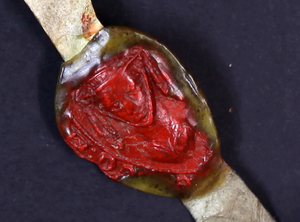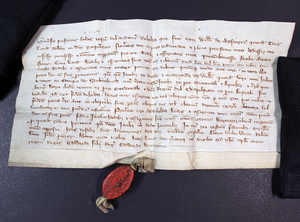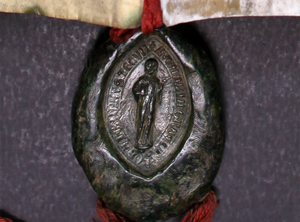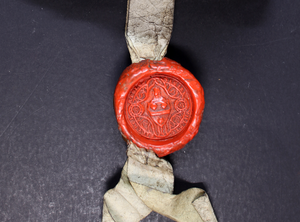Record revealed
A letter from the most powerful woman in Tudor England: Margaret Beaufort
Though never queen, Margaret Beaufort (1443–1509) was the most powerful woman in early Tudor England. But how did the founder of the Tudor dynasty reach and use her position of power?
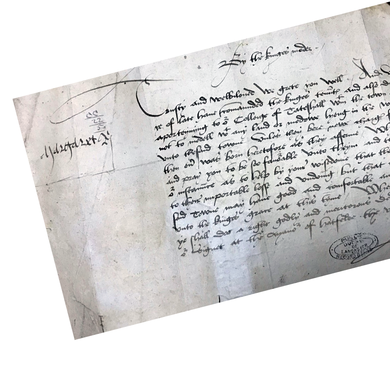
Image 1 of 2
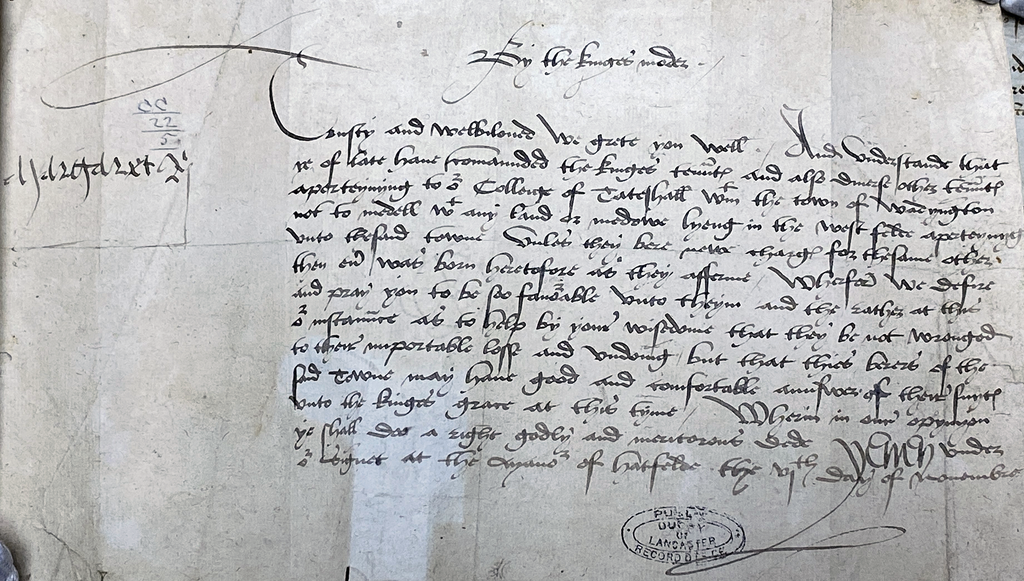
Margaret Beaufort's letter.
Transcript
Margaret R, By the kinges moder
Trusty and welbeloved we grete you well. / And understande that ye of late have commaunded the kings ten[au]nt[es] and also diverse other ten[au]nt[es] aperteynyng to o[u]r College of Tateshall w[i]t[h]in the town of Wadyngton not to medell w[i]t[h] any land or medowe lyeng in the west felde aperteynyg unto thesaid towne unles they bere new charg[es] for the same other then ev[er] was born heretofore as they afferme / Wherfor we desire and pray you to be soo favo[r]ble unto theym, and the rather at this o[u]r insta[u]nnce as to help by your wisedome that they be not wronged to their importable losse and undoing but that theis berers of the said towne may have good and comfortable aunswer of their suyt[es] unto the kinges grace at theis tyme / Wherein in our opynyon ye shall doo a right godly and meritorous dede Yeven under o[u]r signet at the Mano[u]r of Hatfelde the Vjth day of Novembre
Modern English
Margaret R, By the King’s Mother
Trusty and well beloved, we greet you well. And understand that you lately have commanded the king’s tenants and also diverse other tenants connected to our College of Tattershall within the town of Waddington, not to meddle with any land or meadow lying in the West Field of the said town unless they bear new charges for the same, other than ever was borne before now, as they affirm. Wherefore, we desire and pray you to be so favourable to them at this time by your wisdom that they are not wronged to their unbearable loss and undoing, but that these representatives of the said town may have good and comfortable answer of their suits to the king’s grace at this time. Wherein in our opinion you shall do a right goodly and meritorious deed. Given under our signet at the manor of Hatfield the 6th day of November.
Image 2 of 2
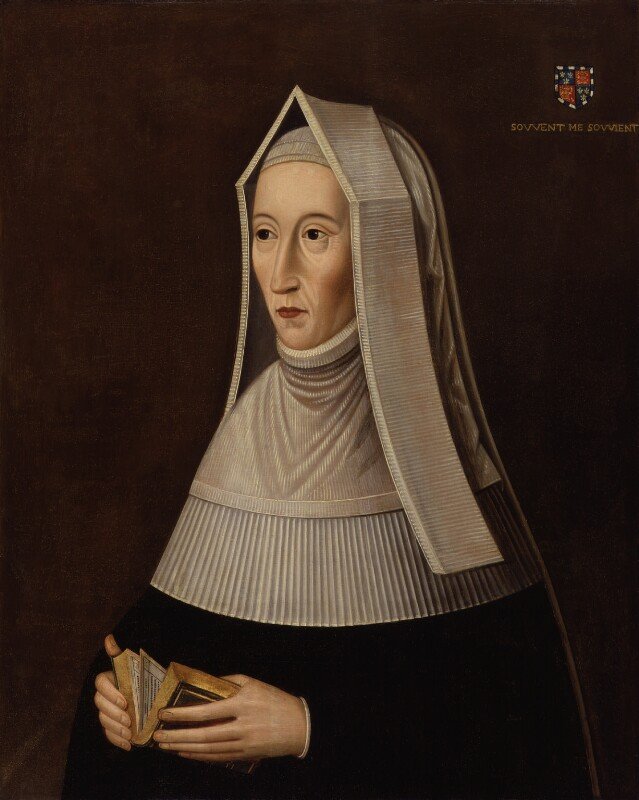
Lady Margaret Beaufort, Countess of Richmond and Derby, by Unknown artist, oil on panel, second half of 17th century. © National Portrait Gallery, London
Why this record matters
Date: 1500
Catalogue reference: DL 12/3
On 28 January 1457, at just 13, Margaret Beaufort gave birth to her only son Henry. Already a widow, and against the backdrop of the Wars of the Roses, in which she was deeply embroiled, it was a traumatic period in this young woman’s life.
Surviving this turbulent time, she went on to become the driving force behind the eventual plot to kill Richard III at the Battle of Bosworth in August 1485. The plan was rooted in her marriage over a decade earlier to the powerful and calculating Thomas Stanley. His military strength and her political skill ensured, remarkably, that her son took the throne as Henry VII in 1485.
As Henry resisted rebellions to early Tudor rule, Margaret’s influence continued to grow. She shaped the look and feel of his court and its imagery. She also organised the upbringing of her royal grandchildren and saw that her servants and proteges filled posts in Tudor government and the Church.
In 1499, Margaret and her husband agreed she would lead an independent life at Collyweston Palace near Stamford in England's East Midlands. By this time, she effectively ruled large parts of the region through her expertise as a landlord, political operator, upholder of the law, and benefactor.
This letter is undated but is probably from around 1500, and it shows Margaret’s power in action. She writes to John Clerke, one of the senior auditors of the Duchy of Lancaster. Both Clerke and the chancellor of the duchy, Sir Reginald Bray, were influential government officials whose careers Margaret had shaped. She writes in support of her tenants of the ecclesiastical college at Tattershall in their petitions to avoid new costs for using the fields and meadows in the duchy estate of Waddington, just south of Lincoln.
The letter's opening ‘By the king’s mother’ places Margaret’s order within a distinctly royal form of writing. She uses the royal plural pronouns ‘we’ and ‘our’ as the king and queen would. She also held the title the Countess of Richmond and Derby, and the signature of ‘Margaret R’ probably represents ‘Margaret [of] R[ichmond]’, yet it appears to be very close to ‘Margaret R[egina]’ (the queen signed many of her documents as ‘Elysabeth R – meaning Elizabeth Regina, or Elizabeth the Queen’). That form would have been a step too far for Margaret in terms of royal hierarchy but is ambiguous enough to demonstrate her personal power was close to that of the king himself. This projection of high authority lay behind the understated expectation her wishes would be upheld.
Margaret continued to exert influence over the Tudor regime. Her control of the court was particularly important after Queen Elizabeth died shortly after childbirth in February 1503. Henry VII’s illness, and subsequent death, drew Margaret back into national politics to ensure Prince Henry took the throne as Henry VIII without challenge in April 1509.
Margaret was present, aged 66, at her grandson's coronation in Westminster Abbey on 24 June 1509. The ascendancy of this dynamic teenage king showed Margaret’s profound success in transforming her Beaufort-Tudor family from political outsiders into the established ruling dynasty. But just five days later, after falling ill at the coronation feast, she died in the Dean's house in the Abbey.
